MREB counts with three laboratories (Besides CINVESTAV's and other institution's facilities that can be used for any investigation purpose)
Laboratory 1
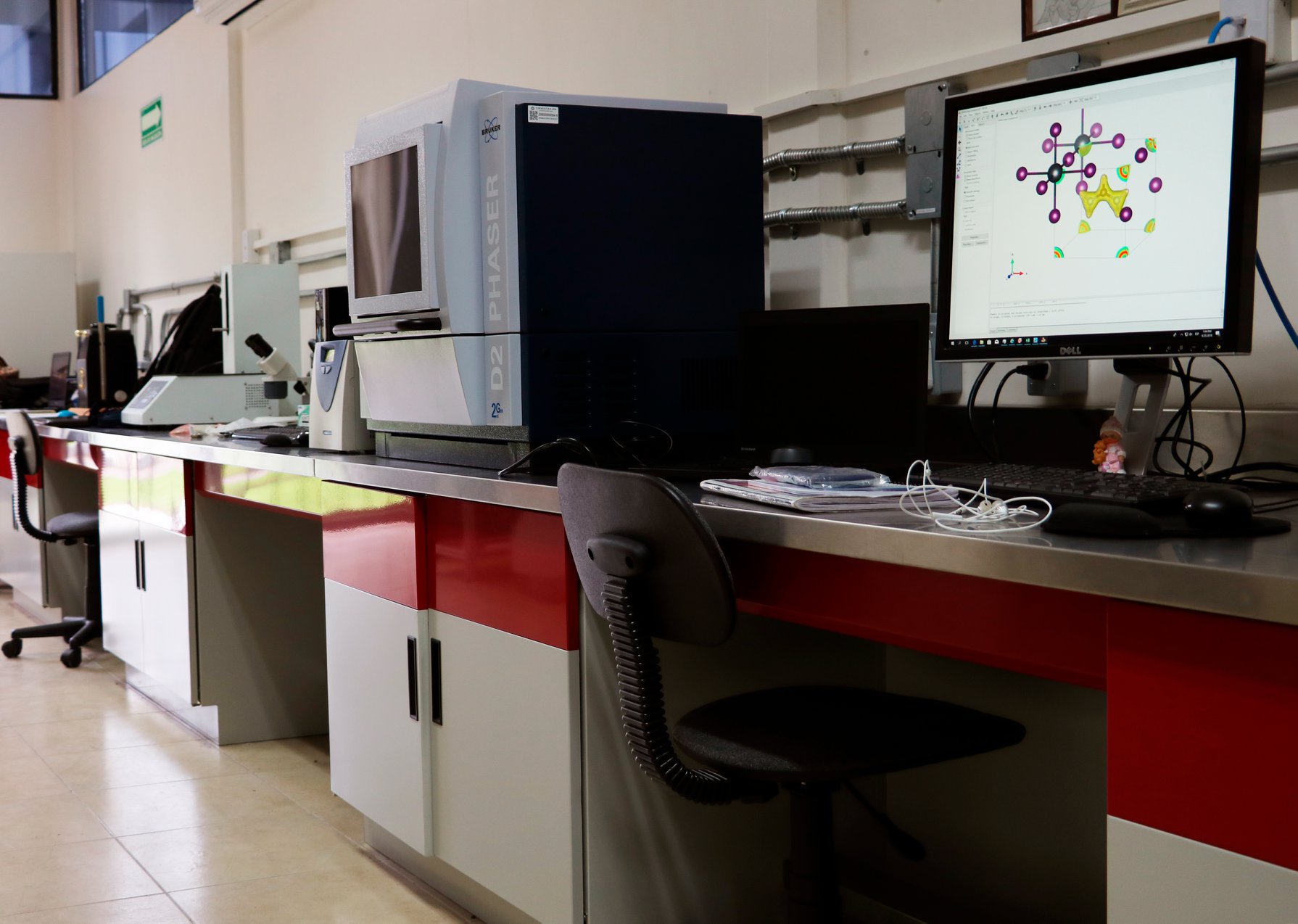
Laboratory 1 has as disposposition the following equipments:
Scanning Electron Microscopy
SEM
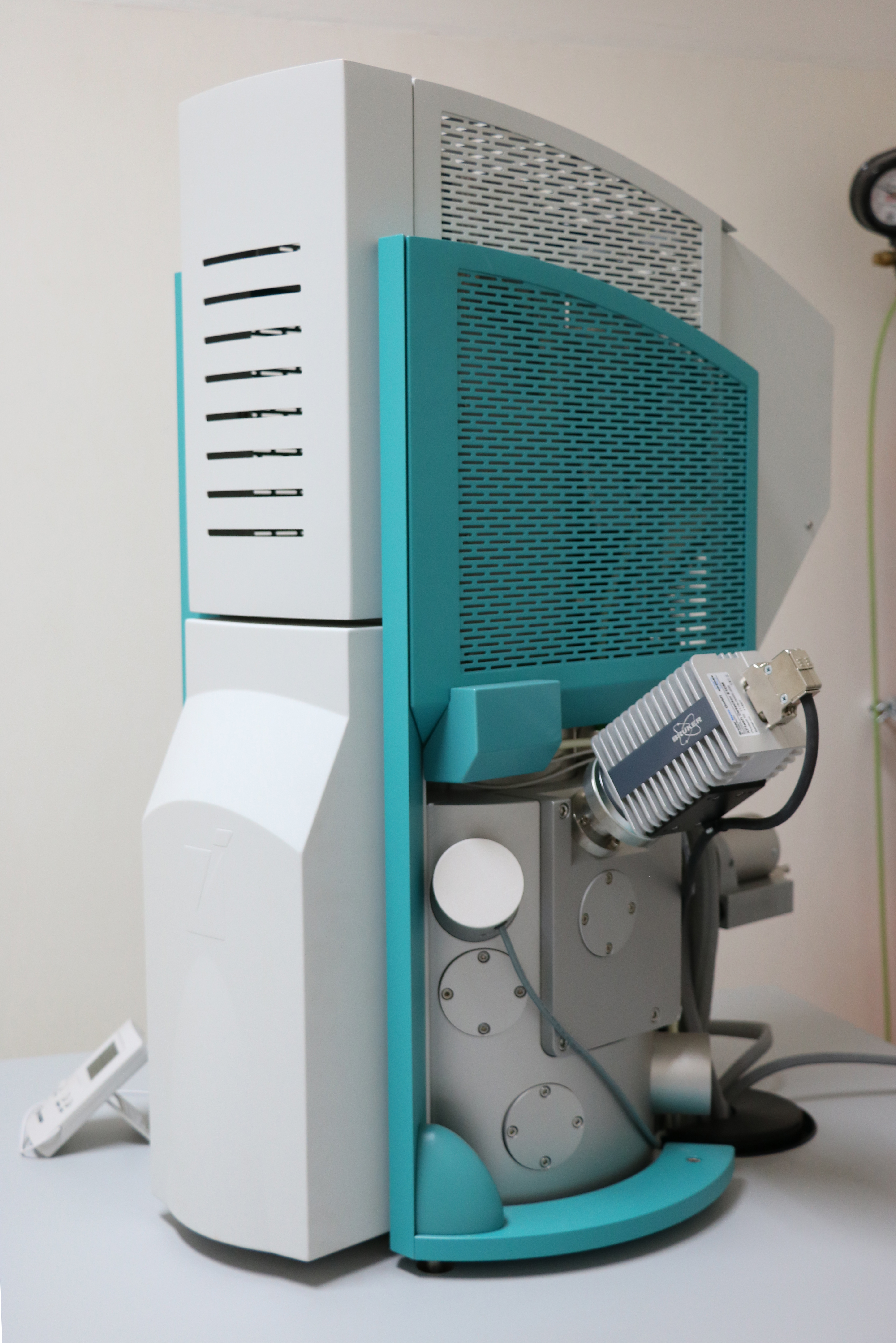 |
Tescan Vega 3 SEM has LaB6 filament and count with the conventional detectors SE(Secondary Electrons) and BSE(Backscattered Electrons) in addition the equipment counts with EDX and STEM module.
|
|
X-Ray Diffraction
XRD
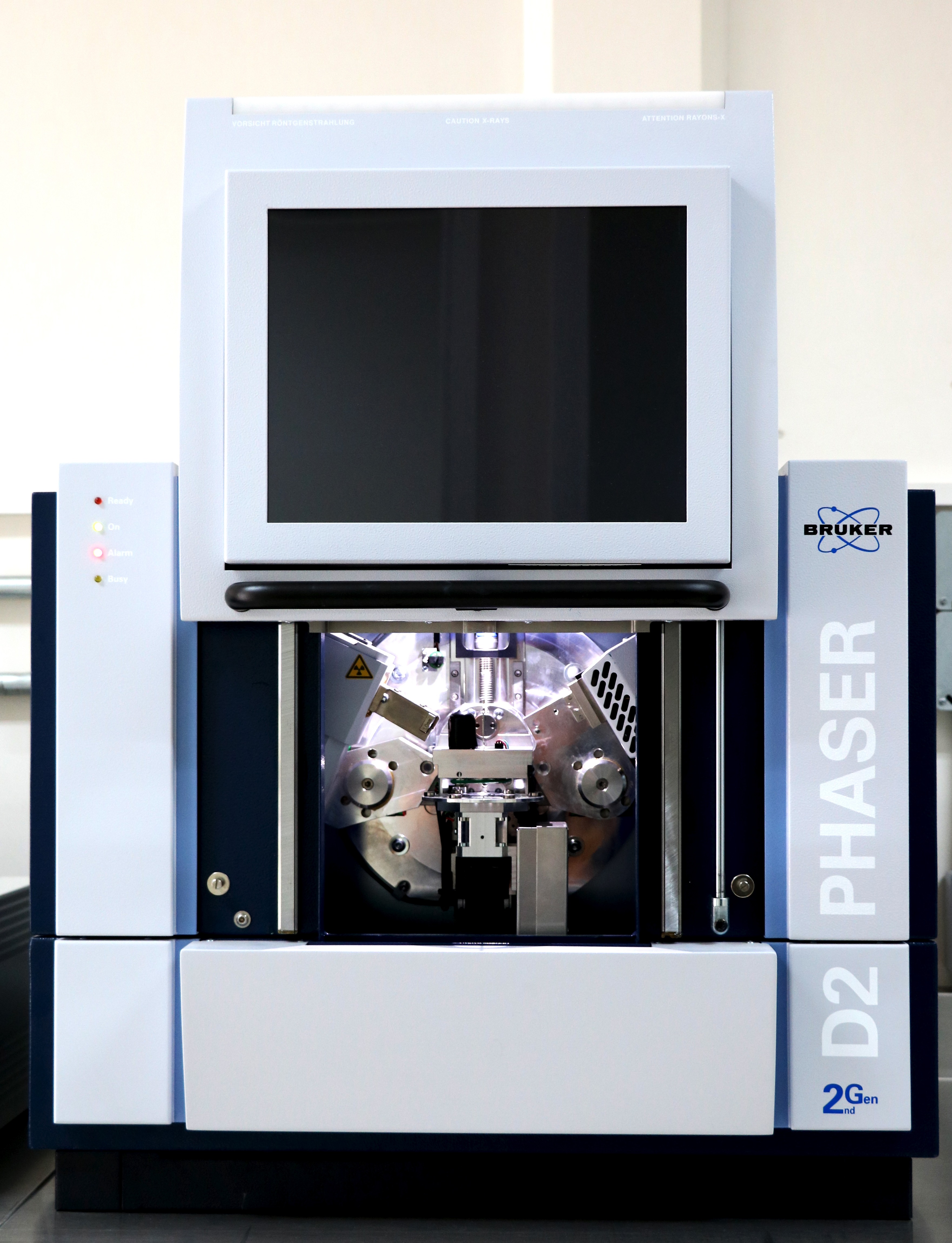 |
Bruker's D2Phaser XRD can be easily operated with accurate results in angles 2ϴ from 5º to 140º, what's more, six samples can be set at the time.
Softwares such as EVA and TOPAS are as disposition of the student to analyse their difractograms.
The laboratory counts with ICDD-PDF2 licence.
|
|
Solar Simulator
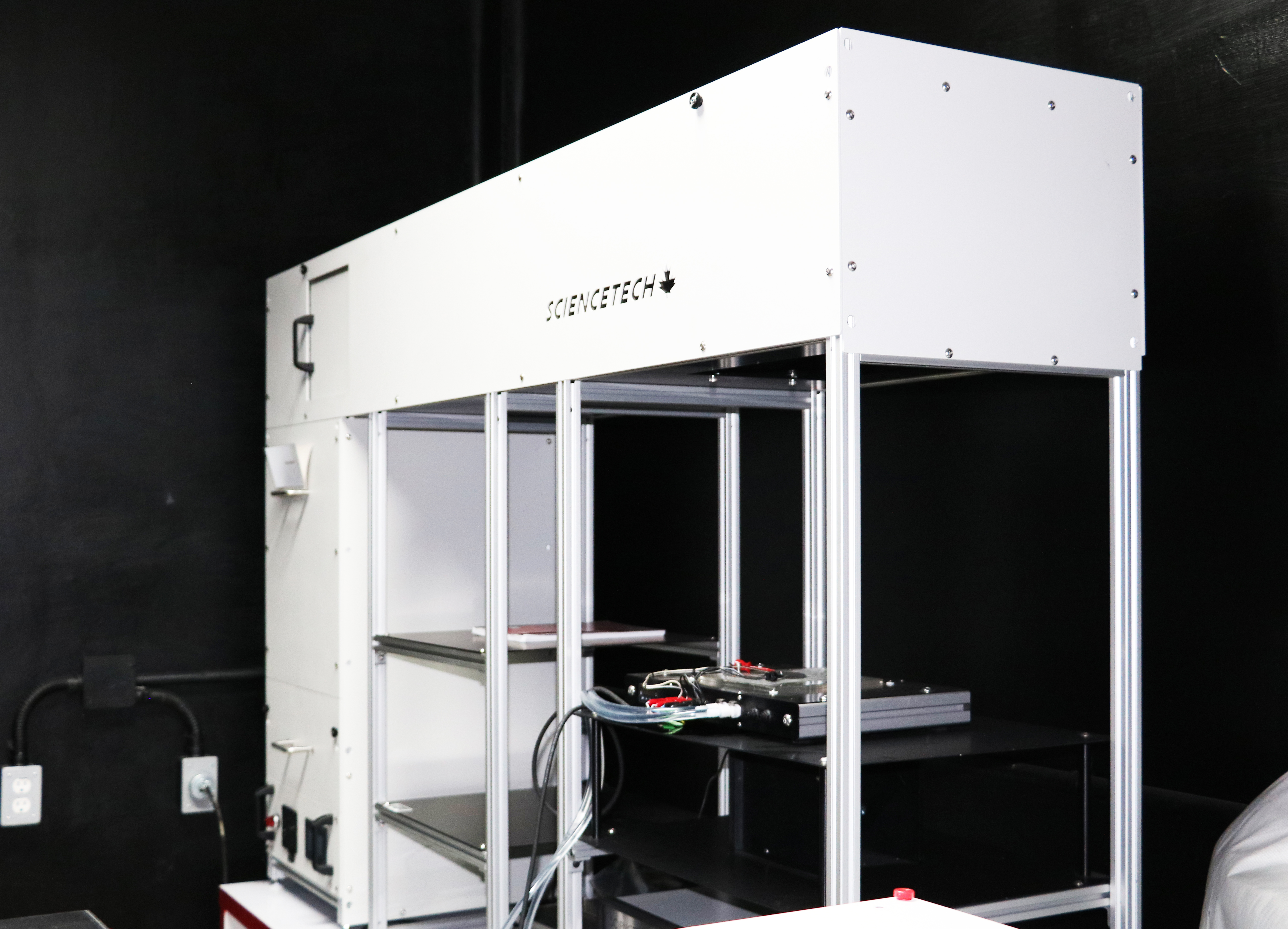 |
ScienceTech Solar Simulator is used to know all the basic characteristics of the solar cell.
|
|
Quantum Efficiency Measurement System
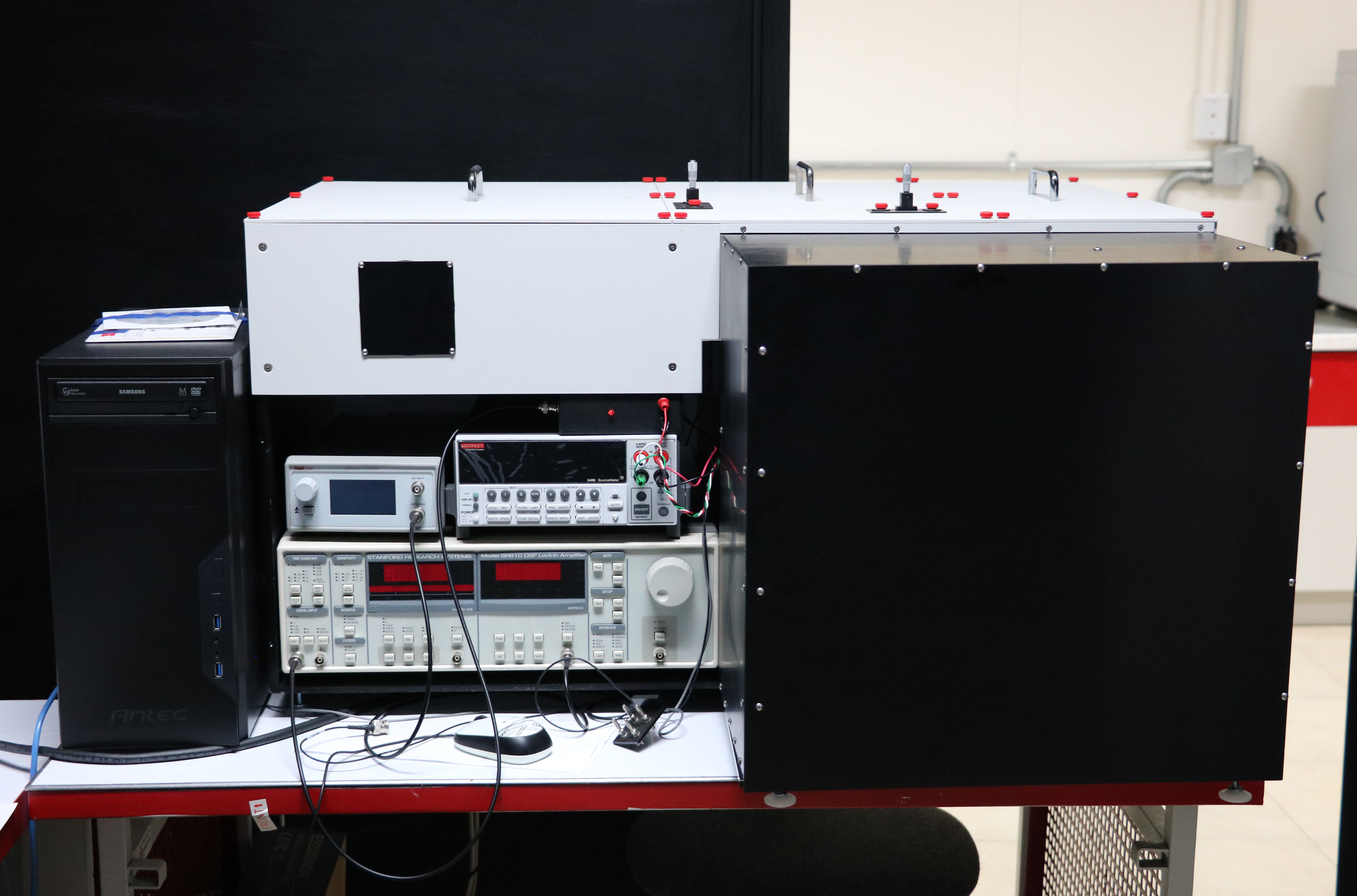 |
Indicates the ratio of the number of photons incident on a solar cell to the number of generated charge carriers.
|
| |
|
|
High Performance Liquid Chromatography
HPLC
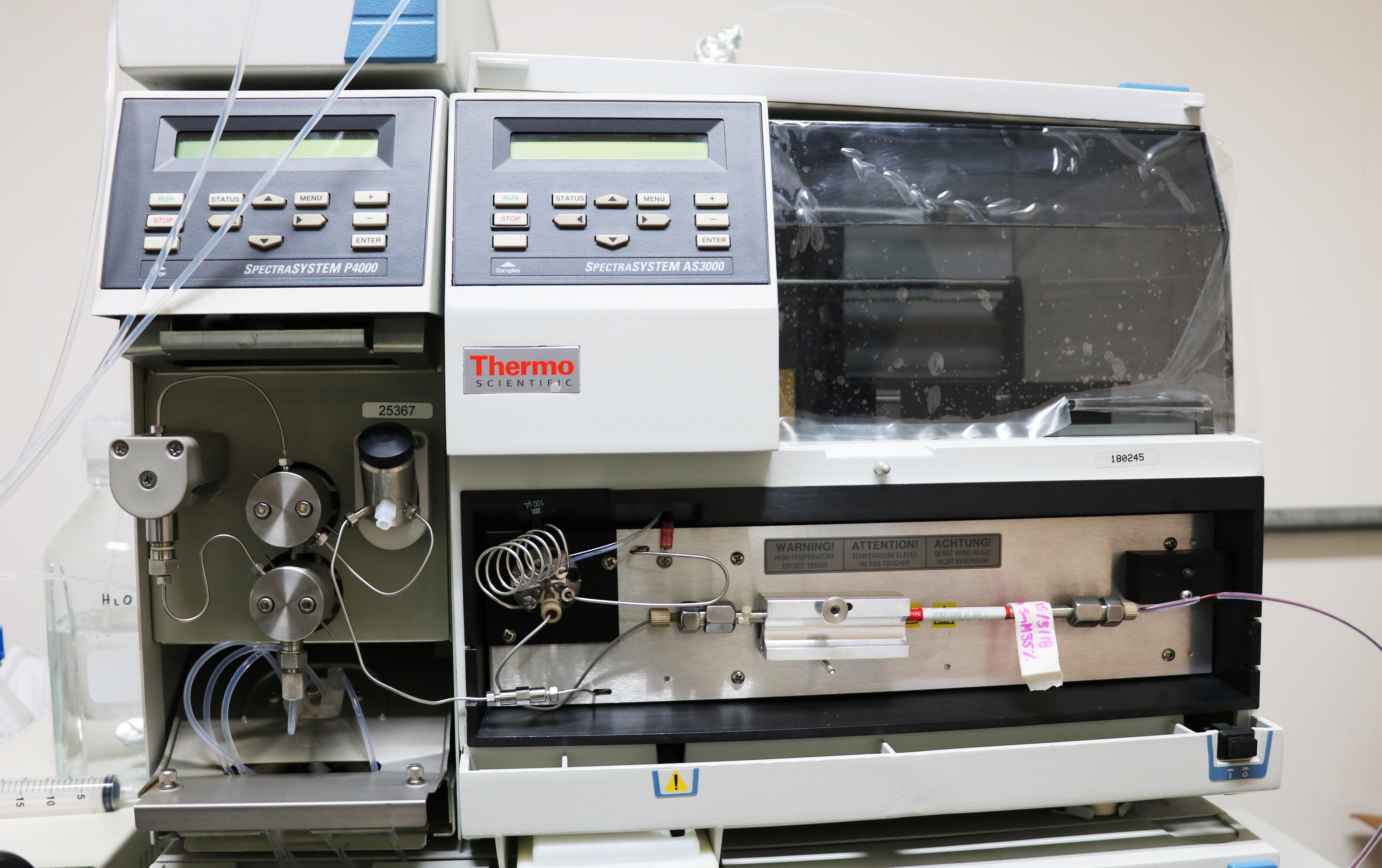 |
ThermoFisher HPLC is used to separate, identify, and quantify eact component in a mixture.
|
|
Inductively Coupled Plasma Spectroscopy
ICP
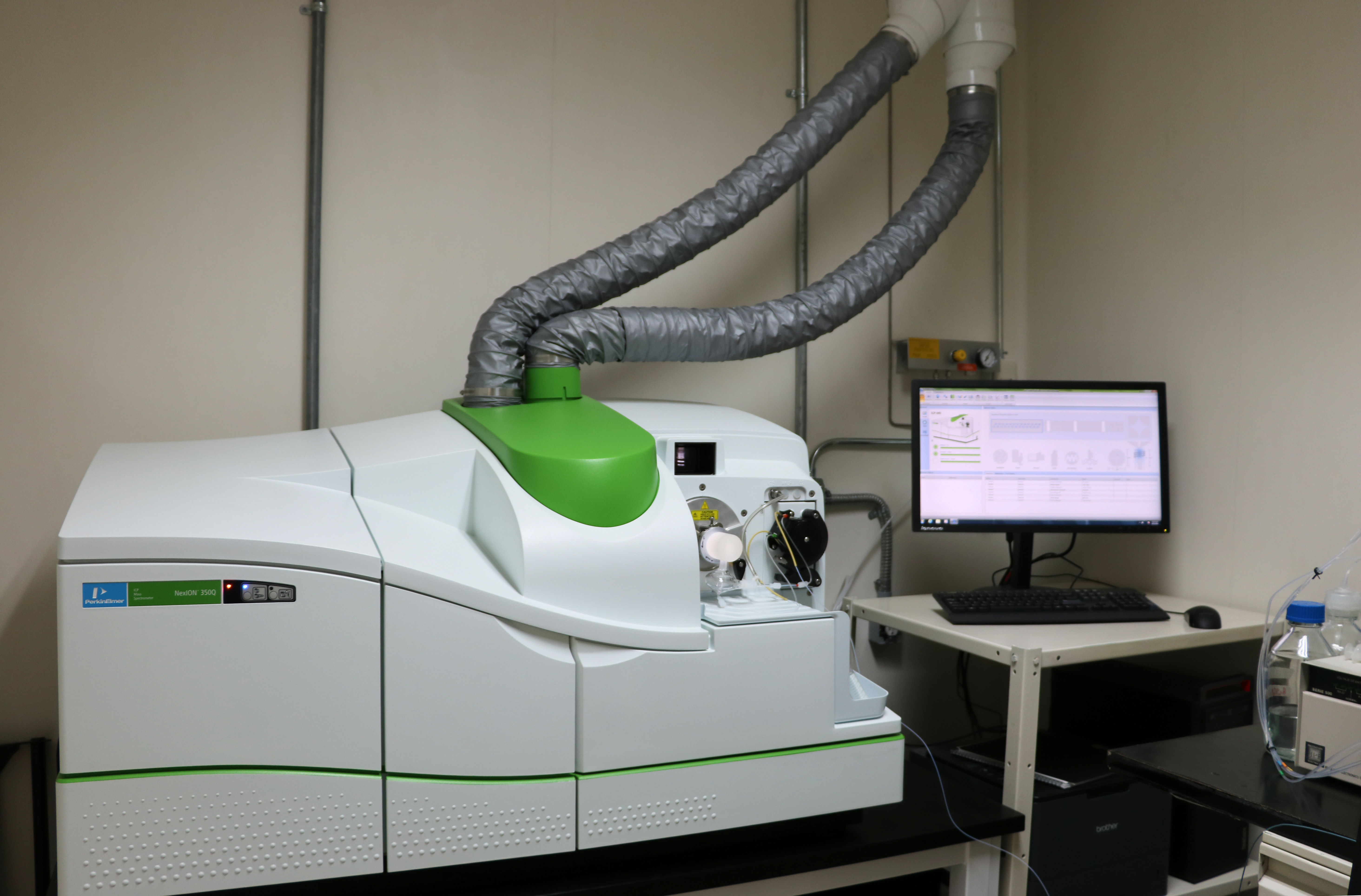 |
It is an analytical method used to detect and measure elements to analyze chemical samples.
|
|
Laboratory 2
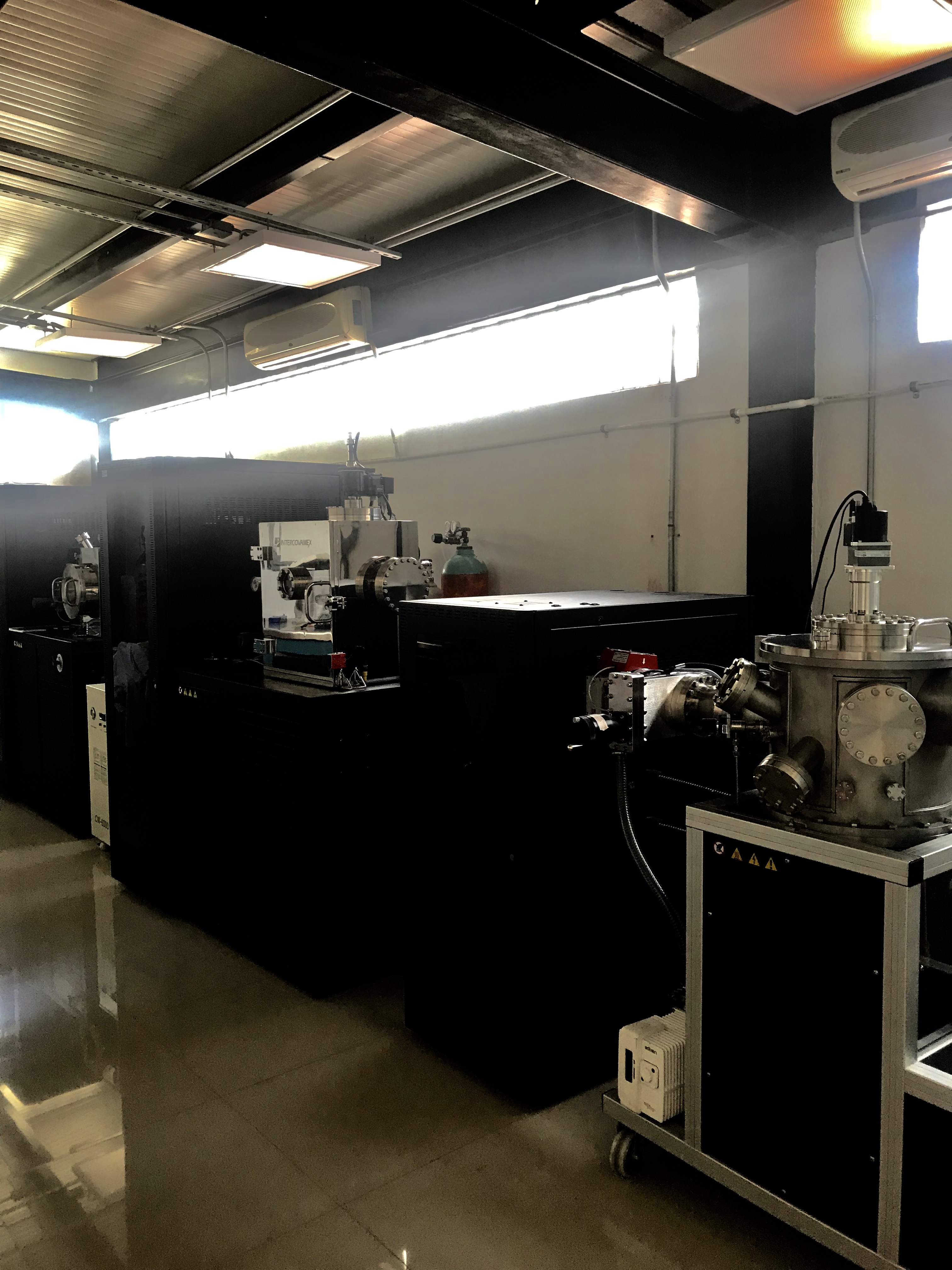
DC-Sputtering
|
|
Sputtering refers to the process of ejection of atomic species from the surface of a solid target (usually in atomic scale) due to momentum transfer originating from the collision between an energetic particle, typically an ion, and the surface. The surface bombardment is generally obtained by gas discharge in a confined space between two electrodes. In using the sputtering technique, there is a continuous bombardment of the negative electrode by the positive ions generated in the plasma. The acceleration of the positively charged bombarding sputtering gas towards the target and the collision results in the ejection of atoms which gets deposited on the substrate. In this case, there is a continual bombarding of the negative electrode by the positive ions generated in the plasma. Usually, argon is the gas employed. In DC sputtering, the source of power is DC (Direct Current) type. It is preferred for electrically conductive target materials as it is easy to control DC power, and the chamber pressure is often between 1 to 100 mTorr.
|
|
RF-Sputtering
|
|
RF sputtering is the technique involved in alternating the electrical potential of the current in the vacuum environment at radio frequencies to avoid a charge building up on certain types of sputtering target materials, which over time can result in arcing into the plasma that spews droplets creating quality control issues on the thin films. RF Sputtering runs an energetic wave through an inert gas in a vacuum chamber which becomes ionized. The target material or cathode which is to become the thin film coating is bombarded by these high energy ions sputtering off atoms as a fine spray covering the substrate to be coated.
|
|
Co-Evaporator
 |
One of the most important vacuum method where the vapors of elements were evaporated and condensed at a certain distance from evaporation source in an evacuated chamber with a high or ultra high vacuum condition (~10-6 Torr) in order to produce thin film compound materials. The different elements are heated up to the point where they start to evaporate or sublimate.
|
|
Laboratory 3
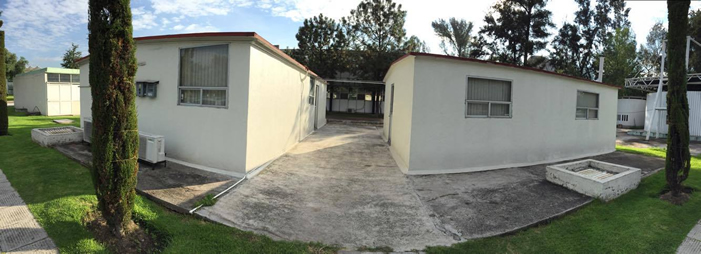
I
In charge:
-
-
For the MREB Group is important to consider different types of facilitu¿ies in which our masters and PhD students, researchers, PostDoc and all the people who are in our group.
Some of our systems and facilities what we have are (Click in the facility what you want to see):
Evaporation system with four evaporation sources, that have Copper (Cu), Indium (In), Galium (Ga) and Selenium (Se). This Equipment will be used for deposition in Cu(In,Ga)Se thin-films
Equipment used for the deposition of window thin-films (e.g. Zinc Oxide) for the solar cells fabrication
Machine that converts materials into fine powder by the tapping of steel balls.
Laboratory equipment that generates rotational movements, aims to separate the components constituting a substance
Equipment used for gold thin-film coating for metalic contacts applications.
Thick-walled metal container sealingly which allows working with steam at high pressure and high temperature to sterilize serving labware.
Especially designed to work with acids, bases and solvents, thereby removing vapors generated by chemicals reactions.
They are electric devices used for sterilization.
Its function is to clean instruments and instrumental parts, machine components or billets.
Designed to handle substances that need not be mixed with the environment and / or resulting toxic to the user.
Machine capable of generating a high force applied on it a relatively small force.
Machine normally used for firing ceramics and metal casting through thermal energy.
Balance having high accuracy for measuring the mass of a material.
Equipment used for mixing, homogenizing and / or preparation of combinations of substances.
Machine capable of extracting air from the packaging in which the laboratory samples are introduced.
Machine used to maintain and grow microbiological cultures or cell cultures, viable growth regulating factors such as temperature, humidity and ventilation.
Refrigerators and freezers are designed to store high volumes, critical samples, reagents and others. They are specifically designed to meet the demanding temperature requirements.
Its function is to maintain, in a controlled different fluids and / or substances environment.